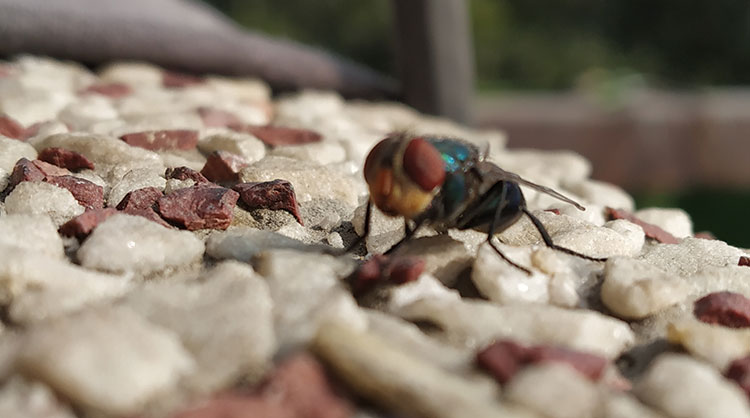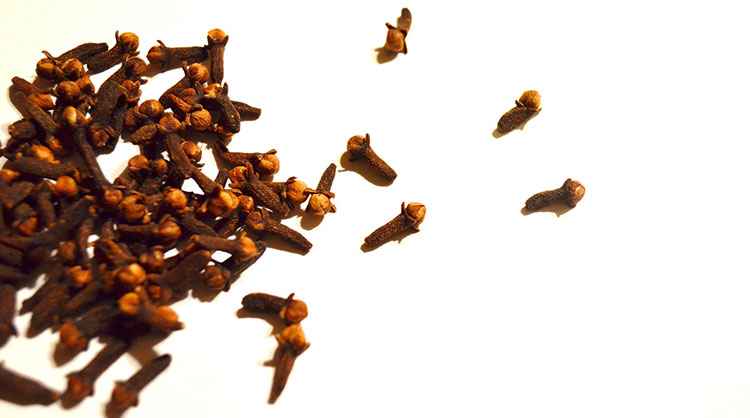Mango Fly Worms: How to Spot and Eliminate them
TICKS ON DOGS

Posted by bravectosouthafrica – 28 November 2019
Mango fly’s are pesky parasites – put a stop to them before they start a nursery underneath your or your pet’s skin! Read more about Mango Fly Worms.
- What is a mango fly?
- Where do mango flies come from?
- High-risk areas
- Mango flies feast on mammals
- Mango fruit fly life cycle
- How do mango worms affect mammals?
- Prevent mango fly eggs on your property
- Signs and symptoms of a mango worm infestation
- Mango worm removal and treatment
- Mango worm removal in dogs
- When to consult the doctor
- Mango worm prevention
- Natural fly repellent
- More pests to be aware of
What Is a Mango Fly – Friend or Foe?
Foe, especially if you prefer your skin hole-free! The mango fly (Cordylobia anthropophaga), aka the marula fruit fly, skin maggot fly, tumbu fly and putzi fly, is a type of blow-fly common in African subtropical regions.
The descriptor anthropophaga comes from the Greek word for “human eater”. Shock and horror might spring to mind, and rightly so, as the mango worm (aka Cayor worm) lives within the skin of its mammal host. After maturing, it pushes its way out – back into the world to repeat the disgusting cycle.
This parasite has been endemic to mid-Africa for more than 135 years, but recently the fly has made an appearance in areas where it hasn’t been seen before. Gauteng had pops of outbreaks after the rainfall earlier in 2019, which makes the coming rainy season a risk for pet owners – even more so for inexperienced pet owners.
However, worrying won’t help. Get to know and outwit the mango fly before the worm burrows its way into your or your pet’s body. Read on for useful tips, tricks and information, courtesy of Bravecto®!

Due to Globalisation, the Mango Fruit Fly Is Well Travelled
Fruit flies thrive in a humid climate. Initially, they were happy campers in the African subtropics, but as human migration increased, they’ve been distributed to more African countries.
The mango fly worm’s stomach-turning mode of hitchhiking and the fly’s airborne nature makes spreading throughout Africa a breeze.
Fast forward to 2019, and the parasite is quite at home in some of the more tropical areas of South Africa. Limpopo, KwaZulu-Natal, and more recently, Gauteng, have been affected.
High-Risk Areas & Factors that Increase the Likelihood of Mango Worm Infestations
The hot and humid parts of our country have a higher risk of experiencing tumbu fly infestations. This was the case with recent outbreaks in the East Rand, Pretoria, Centurion, Boksburg and Kempton Park.
Although you cannot control the climate, you can make your home as inhospitable as possible. Avoid creating ideal nesting grounds for these parasites. Read on to learn how to keep mango worms out of your home.

The Mango Fly – a Menace to Mammals in Africa
Mammals are hosts but also natural reservoirs for mango fruit flies. This means that the parasite can live off of mammals without triggering disease. However, what they do cause is cutaneous myiasis – an infestation marked by a parasite feeding on the host’s tissue.
Unfortunately for humans, dogs and rodents, mango worms and fruit flies prefer mammals’ warm bodies to nurture their eggs to maturity. Since larvae cannot develop in poultry tissue, they have to seek out viable host tissue. They do this by laying their eggs in areas frequented by mammals.
It’s largely a hit-and-miss process but it seems like the mango fly has hit, albeit accidentally, a bountiful reservoir – humans! Let’s hope their losing streak picks up again soon. If we can remove the vector (aka the middleman that transports the larvae from the fly to our skin, like a bedsheet) from the equation, we might just place ourselves out of reach.
As for our pets, specifically dogs, we need to inspect their skin regularly to keep them happy and healthy. This is especially the case when living in a high-risk area.

Mango Fruit Fly Life Cycle – Egg, Larval, Pupal, Fly
Mango worms or larvae penetrate the skin of mammal hosts, but what happens before then? And where do they come from? Look no further, for the answer is here! See the summary of the metamorphosis of the mango fly below.
1. Egg Laying
The mango fly lays its eggs (roughly 100-300 of them!) in contaminated soil, often containing faeces or urine.
2. Hatching
Larvae hatch after a brief incubation period. After hatching, they try to find a host and can survive without one for up to two weeks. Piercing a host’s skin can take less than 25 seconds.
3. Larval Stage
Once they’ve found a suitable host, the larvae crawl onto the skin and then dig their way through the surface. Here they undergo instar stages, during which they shed their hooks, spiracles, cuticles, mouth, and yes, even head.
It takes between 8-12 days of feeding for a larva to develop into a fully-ledged maggot.
4. Pre-pupal Stage
During the third instar stage, the larvae burrow their way to the surface of the skin, drop to the ground and bury themselves. Here the mango worm pupates – its outer skin will dry, darken and harden to form a pupa casing.
5. Pupal Stage
The mango fly develops during the pupal stage.
6. Final Fly Stage
Once fully developed, a fly emerges from the pupal cocoon. 48 hours after emerging, the mango fly is sexually mature and ready to create the next generation of mango flies.
If these tumbu flies haven’t made you squirm yet, what you read next might.

How Do Mango Fly Worms Affect the Host?
So, you already know that the mango fly worm, with its penetrating mechanism, can dig its way through your skin and make itself comfortable within your flesh. But did you know that, once there, the larva feasts on blood, plasma and cells to grow big and strong?
As it develops, the host’s skin swells to form boil-like myiasis that will eventually erupt, exposing a fully matured maggot. These wounds, or larvae nursery pockets, usually occur on the buttocks, lower back, waist and back of arms.
On the upside, mango worms don’t cause severe health complications. They simply need a temporary place to grow – i.e. your person. On the downside, as the papule enlarges, so does the host’s pain and itching.
After their development is complete, the boil’s opening expands and lets the maggot’s waste products drain, and then, ta-da! A pale creature emerges and sets itself free into the big, wild world – driven by instinct, to create more horrific little flesh-eaters.
So, all in all, it’s not the most terrible outcome. Although, a host might not agree. However beautiful the cycle of life might be, you may want to consider eliminating your risk of being infected.
Luckily, avoiding a brush with these tiny horrors is simple.
Eliminate or Disinfect Prime Mango Fly Real Estate
Since the mango fly lays its eggs in moist soil, often marked with faeces or urine, you can protect your dogs and yourself by not playing in damp dirt. Check your pets frequently for bumps and other pesky hitchhikers, like ticks and fleas.
With regards to your human family members, it’s important to know that, at times, mango flies lay their eggs in wet linen, especially when drying outside.
Signs & Symptoms of a Mango Worm Infestation
If you missed the first essential step of mango fly avoidance, be on the lookout for the signs and symptoms of a tumbu fly infection. Here are the tell-tale signs to look out for:
On Your Pet
- A strange bump, resembling a large pimple, with an opening at its centre
- Sensitivity around the bump area
- Incessant scratching
On Yourself or Your Children
- Skin discomfort
- Mild to severe itching
- Localised pain
- Blister- or boil-like lesions
- Redness or inflammation
- You may feel or see movement underneath your skin
- Fever
- Increased heart rate
- Difficulty sleeping
Spot any of the signs? Then find out how to remove these pesky parasites below!

3 Ways to Succeed in Mango Worm Removal
As you now know, apart from discomfort and some unease, the mango worm will cause you no lasting harm. Be that as it may, removing the parasite is imperative – here’s how:
1. Hydraulic Expulsion
Removing a mango worm is less uncomfortable when done by a doctor. A doctor will inject lidocaine and epinephrine into the larvae lesions. The pressure from the fluid will force the larva out. It may be necessary for the doctor to use forceps to pull it out.
2. Suffocation & Pressure
Remove any crust or scab that’s formed on the surface of the lesion. Cover the opening or top of the blister with wax, Vaseline or petroleum oil to cut off the worm’s oxygen supply. When it comes out for air, remove it with forceps or a pair of tweezers.
3. Squeeze & Eject
Squeeze the mango worms out by gently pressing the sides of the boil. You can also use forceps. Removing the whole worm is essential; any remaining larva bits may cause infection.
After removing mango fly worms, disinfect the area to avoid secondary infections.
Do not attempt to remove the mango fly worms from your pet at home. If your pet has a mango worm infestation, get help from a veterinarian.
Canine-Focus: Mango Worms in Dogs Treatment
For a complete treatment of mango worms in dogs, ask your vet to prescribe a product that prevents fly larvae infestations. If your pup has a substantial infection, enquire about a dip or shampoo (containing chlorhexidine) to combat the bacterial load on their skin.
When to Take Your Mango Fly Infestation to the Doctor
You will make life easier for yourself if you visit the doctor, and for your furry family member if you take them to the vet, as soon as you see the boil-like mango worm lesions. The doctor or vet will easily extract the parasites and prescribe the appropriate disinfectant and recovery treatment. This is the best method for avoiding secondary infections that could seep into the wound.

Here’s How to Prevent a Tumbu Fly Infestation
Stick to these guidelines to keep your family tumbu fly-free. If you live in a high-risk area, rather be safe than sorry. Most Cayor worms find their way to humans through a vector – typically linen or manure-containing dirt. Here’s what to do to avoid a brush with parasites:
Don’t hang washing outside
In high-risk areas, especially after a rainy spell, you should avoid hanging your washing outdoors or near open windows. The damp material attracts mango flies. And, whatever you do, don’t leave wet clothing to dry on the floor.
Wash and tumble dry on high heat
If possible, wash your clothing, bedding and towels on high heat and tumble dry afterwards. Mango fly eggs cannot withstand heat, which means they will perish during the cleaning spree.
Iron clothing
Ensure no larva is left alive by ironing your clothes and bedding. Take special care around the seams, as flies lay their eggs in nooks to keep them safe.
Wash your pet’s bed regularly
Keep your dog’s sleeping quarters free from mango worms by cleaning the area regularly. Wash their bed, cushions and blankets on high heat and tumble dry if possible.
Bathe your dog often
Groom (and, if your dog has long hair, shave) and bathe your pet regularly to make them as unattractive to mango larvae as possible.
Avoid rolling around in questionable soil
Avoiding contaminated soil may come naturally to you. However, your kids or pup may not be able to resist the urge to play in damp dirt. Keep the kiddos and pets away from these areas or check them for bumps daily.
Wear shoes outdoors
If you live in a hot and humid region, wear shoes on your outings, particularly if you’re going on a hike or near fruit farms.
Pick up and dispose of fruit that drop from trees
Ripe fruit lures flies, which is why it’s best to get rid of fallen fruit as soon as possible. Remember to take out bins and clean them regularly to avoid attracting mango flies.
Clean up faeces and urine pronto
Regardless of its origin, clean up any secretions as soon as possible. Flies love rubbish, so keep your property in tip-top shape to avoid unwanted visitors.
Inspect children and pets for pimple-like sores
You can’t watch your children and pets every second of the day, which is why a routine check is essential to picking up a mango worm outbreak. Create a daily habit, during bath or playtime, to catch anything suspicious early on.
Invest in fly repellents
Purchase a commercial fly repellent for your home or fly-repelling spray (like Shoo Fly) for your dog, and incorporate natural pest repelling remedies. Getting a flyswatter won’t hurt either.

6 Natural Mango Fly Repellents


Mango Flies Aren’t the Only Pest Lurking in the Backyard
Now you have all that you need to conquer a mango fly infestation! But do you have the tools to beat the other pests living around your home, or even on your pets?
Get to know the most common pests that bug pets and learn how to drive them to extinction.
- Ticks
Many pests can cause secondary infections or diseases and ticks are no exception. Tick bites can lead to tick fever in pets and humans. That’s why it’s essential to protect the whole family with a tick-eliminator. The Bravecto® Chew kills ticks and protects dogs from future infections for 12 weeks, while one dose of Bravecto® Spot-On for Dogs can last for 4 months! Click here to read more about ticks on dogs – The Complete Guide. - Fleas
Fleas make your puppy itch and, if swallowed, can lead to tapeworm. Fleas are small and multiply at an incredible rate. Luckily, this is preventable with Bravecto® for dogs. The Bravecto® Chew protects pups from flea infestations for 12 weeks while one dose of Bravecto® Spot-On for Dogs can protect furry family members for up to 6 months! - Mites
Some of the smallest but most contagious pests are mites. These critters crawl inside your dog’s ears and can affect you too! Unfortunately, more than one type of mite can bug you and your pet. The various mite species can cause a multitude of problems but those to be aware of include: Sarcoptic mange (a zoonosis disease that can affect humans), Demodectic mange (affects dogs but is non-contagious) and ear infection (caused by ear mites).
The good news is that Bravecto® can protect your pet from those mite species that lead to health complications. Prevent a mite infestation with long-lasting protection with Bravecto® for Dogs.
There are a lot of nasty critters out there: make sure you protect yourself and your family, (furries included), from infestation.
Learn more about Bravecto® products or find a stockist near you today!
Picture reference: https://www.healthline.com/health/mango-fly
Subscribe to our Newsletter
Get to know your furry friend better! Sign up for all things dog- or cat-related.
The Hairy Facts about the dreaded hairball
12 April 2021
Help! My dog’s barking mad! Volume 2
12 April 2021
Your Itchy, Scratchy Cat – All About Cat Skin Problems
12 April 2021
The Dog’s Diet: A Bone of contention?
01 April 2021
Mango Fly Worms: How to Spot and Eliminate them
Posted on November 28,2019
Managing Mange And Mites In Your Dog
Posted on June 11,2018
Why Do Cats Purr and How? Learn What Your Cat Is Saying
Posted on October 14,2020
How to Get Rid of Ear Mites in Dogs
Posted on November 06,2019









